Causes of World War I
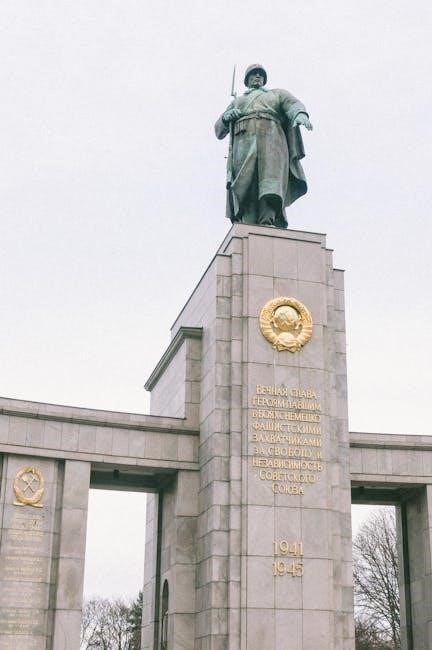
The outbreak of World War I was triggered by a combination of militarism‚ alliances‚ imperialism‚ and the assassination of Archduke Franz Ferdinand‚ creating widespread tensions.
- Militarism fueled an arms race among European powers‚ heightening suspicions and aggression.
- The complex system of alliances divided nations into opposing camps‚ escalating conflicts.
- Imperialist rivalries over colonies and resources exacerbated economic and political tensions.
- The assassination of Archduke Franz Ferdinand by a Serbian nationalist ignited the conflict.
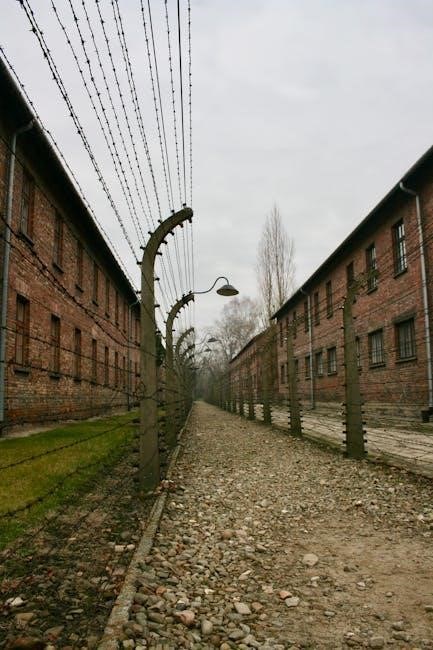
Militarism and the Arms Race
Militarism‚ or the glorification of military power‚ was a significant cause of World War I. European nations engaged in an intense arms race‚ increasing military spending and expanding their armies and navies. Germany’s rapid naval expansion‚ for instance‚ threatened Britain’s dominance at sea. This escalation created an atmosphere of suspicion and competition‚ as nations viewed military strength as a measure of national prestige. The buildup of weapons and troops made war seem inevitable‚ as countries prepared for conflict and sought to demonstrate their power. This mindset contributed to the tensions that eventually led to the outbreak of the war.
The System of Alliances
The complex system of alliances before World War I divided Europe into two opposing blocs: the Triple Entente and the Triple Alliance. Britain‚ France‚ and Russia formed the Triple Entente‚ while Germany‚ Austria-Hungary‚ and Italy composed the Triple Alliance. These alliances created a situation in which a localized conflict could quickly escalate into a broader war. When Austria-Hungary declared war on Serbia‚ Russia mobilized to support Serbia‚ prompting Germany to declare war on Russia and France. Britain then entered the war to support Belgium‚ drawing more nations into the conflict. This chain reaction highlighted the dangers of entangling alliances.
Imperialism and Economic Rivalries
Imperialism and economic rivalries played a significant role in the lead-up to World War I. European powers competed for colonies‚ raw materials‚ and markets‚ leading to heightened tensions. Germany’s rapid industrialization and naval expansion challenged Britain’s dominance‚ while France sought to expand its influence in Africa. Austria-Hungary’s actions in the Balkans further destabilized the region. These economic and territorial disputes fueled nationalistic sentiments‚ making the complex system of alliances more dangerous. When combined with political and military tensions‚ these rivalries set the stage for a global conflict.
The Assassination of Archduke Franz Ferdinand
The assassination of Archduke Franz Ferdinand on June 28‚ 1914‚ in Sarajevo‚ Bosnia‚ was the immediate trigger for World War I. Gavrilo Princip‚ a Bosnian Serb and member of the Black Hand group‚ carried out the assassination. This act was intended to unify South Slavs under Serbian rule and end Austro-Hungarian control. Austria-Hungary‚ backed by Germany‚ issued an ultimatum to Serbia‚ leading to its rejection and the declaration of war. This event set off a chain reaction among European alliances‚ drawing in Russia‚ France‚ and Britain. The assassination became the spark that ignited the broader tensions of the time.

Major Events of World War I
World War I began with the invasion of Belgium‚ leading to Britain’s entry. Trench warfare dominated the Western Front‚ while naval blockades and the U.S. entry shifted the war’s course.
The Outbreak of the War and Early Battles
World War I began on July 28‚ 1914‚ following the assassination of Archduke Franz Ferdinand. Austria-Hungary declared war on Serbia‚ triggering a chain reaction among European alliances. Germany invaded neutral Belgium‚ prompting Britain to enter the war. The first battles‚ such as the Battle of the Frontiers and the First Battle of the Marne‚ saw initial German advances halted by Allied forces. These early conflicts set the stage for the prolonged and devastating war that would follow.
- The assassination sparked a rapid escalation of diplomatic crises.
- The invasion of Belgium drew Britain into the conflict.
- Early battles revealed the brutality and scale of modern warfare.

The Trench Warfare and the Western Front
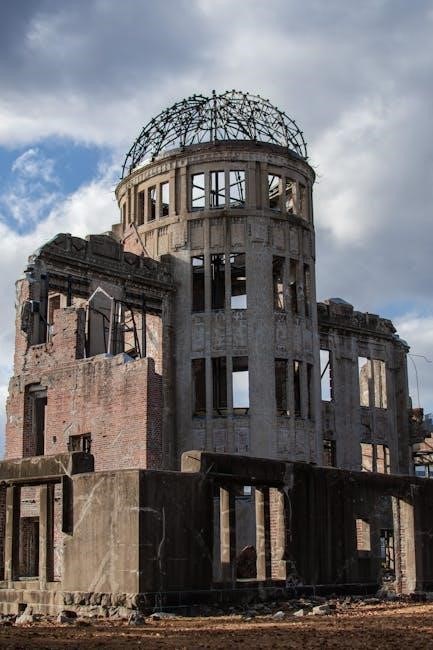
Trench warfare dominated the Western Front‚ where soldiers endured appalling conditions in vast networks of dugouts. The stalemate led to massive losses as both sides employed machine guns‚ barbed wire‚ and poison gas. Attempts to break the deadlock‚ like the Battle of the Somme‚ resulted in unprecedented casualties. The trenches became a symbol of the war’s brutal and static nature‚ lasting until the final year of the conflict.
- Trenches stretched across hundreds of miles‚ creating a battleground of attrition.
- Soldiers faced constant threats from artillery‚ disease‚ and psychological strain.
- The introduction of new technologies‚ such as tanks‚ aimed to overcome the stalemate.
The Naval War and the Blockade of Germany
The naval war played a crucial role in World War I‚ with the Allied blockade of Germany aiming to cripple its economy and limit supplies. Germany responded with unrestricted submarine warfare‚ targeting merchant ships‚ including neutral vessels. This led to the sinking of the Lusitania‚ drawing the U.S. into the war. The blockade severely impacted Germany’s economy and civilian life‚ contributing to widespread starvation and eventual surrender. The Allies’ control of the seas was a decisive factor in the war’s outcome.
- The blockade prevented essential goods from reaching Germany.
- Germany’s U-boat campaign initially disrupted Allied shipping.
- The introduction of convoy systems reduced losses.
- The blockade’s economic impact weakened Germany’s ability to continue fighting.
The United States’ Entry into the War
The United States initially maintained neutrality in World War I‚ focusing on domestic issues and avoiding European conflicts. However‚ several factors led to its entry. Germany’s unrestricted submarine warfare‚ including the sinking of the passenger ship Lusitania‚ outraged the American public. Economic ties with the Allies and the interception of the Zimmermann Telegram‚ in which Germany sought to ally with Mexico against the U.S.‚ further pushed the nation toward war. President Woodrow Wilson requested a declaration of war against Germany in April 1917‚ citing threats to neutrality and democratic principles.
- Unrestricted submarine warfare threatened U.S. shipping.
- Economic ties favored the Allies.
- The Zimmermann Telegram was a direct provocation.
- The sinking of the Lusitania swayed public opinion.

Consequences of World War I
The war led to the Treaty of Versailles‚ imposing harsh penalties on Germany‚ fostering economic instability‚ and sowing seeds for future conflicts like World War II.
- The Treaty of Versailles redrew national borders‚ creating tensions.
- Economic devastation and hyperinflation gripped Germany.
- The rise of fascist and nationalist movements emerged.
The Treaty of Versailles and Its Provisions
The Treaty of Versailles‚ signed in 1919‚ officially ended World War I. Its provisions included the War Guilt Clause‚ which blamed Germany for the war‚ and significant reparations.
- Germany lost substantial territory‚ including Alsace-Lorraine to France and Saar to Britain under a League of Nations mandate.
- Military restrictions were imposed‚ limiting Germany’s army and navy.
- The treaty’s harsh terms fueled economic hardship and resentment in Germany‚ contributing to the rise of Adolf Hitler.
These provisions deeply impacted Germany and set the stage for future global conflicts.
The Rise of New Political Movements and Leaders
World War I’s aftermath saw the rise of new political movements and leaders‚ reshaping global politics. The war’s devastation led to widespread discontent‚ fostering radical ideologies and the emergence of charismatic figures.
- Bolshevism emerged in Russia‚ with Lenin establishing the Soviet Union and promoting Marxist ideologies.
- Fascism gained traction in Italy and Germany‚ with leaders like Mussolini and Hitler exploiting post-war economic and political instability.
- Nationalism surged across Europe‚ as nations sought to redefine their identities and borders.
These movements and leaders significantly influenced the interwar period‚ setting the stage for future global conflicts.
The Economic and Social Impact on Europe
World War I left Europe economically devastated‚ with widespread destruction of infrastructure and industries. Many nations faced severe economic hardships‚ including inflation‚ unemployment‚ and massive war debts. Socially‚ the loss of millions of soldiers created a labor shortage‚ while returning veterans often struggled with physical and mental scars. The war also accelerated social change‚ as women entered the workforce in unprecedented numbers. The economic instability and widespread disillusionment contributed to the rise of radical political movements‚ further destabilizing post-war Europe.
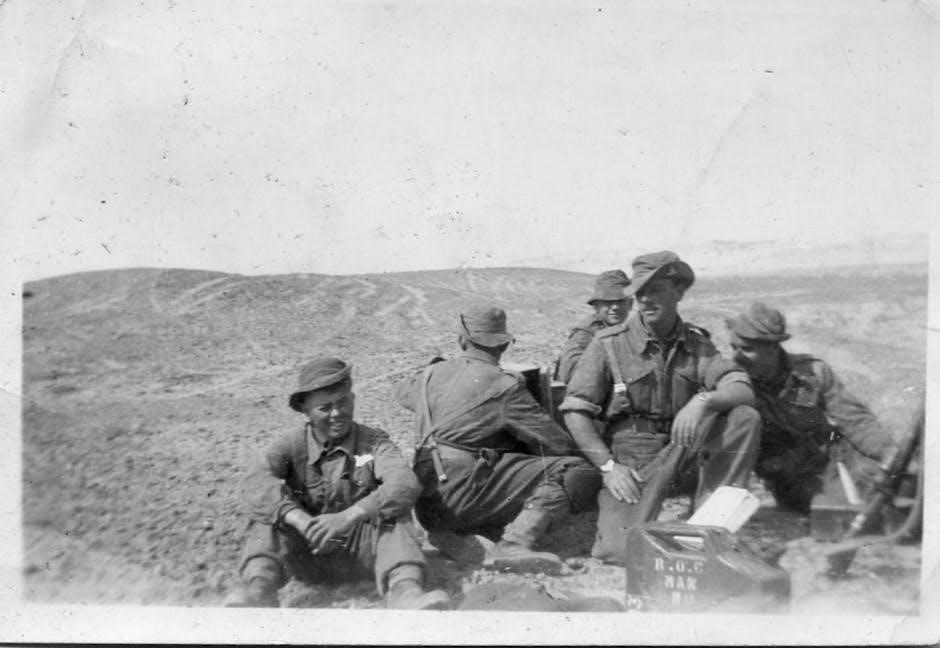
Key Figures of World War I
Notable leaders included Kaiser Wilhelm II‚ Woodrow Wilson‚ and David Lloyd George‚ while military commanders like Erich Ludendorff and Ferdinand Foch shaped the war’s course.
Political Leaders: Kaiser Wilhelm II‚ Woodrow Wilson‚ and David Lloyd George
Kaiser Wilhelm II of Germany aggressively pursued expansion‚ while Woodrow Wilson of the U.S. promoted peace and the League of Nations. David Lloyd George led Britain through the war‚ balancing domestic politics with military strategy.
Military Commanders: Erich Ludendorff‚ Douglas Haig‚ and Ferdinand Foch
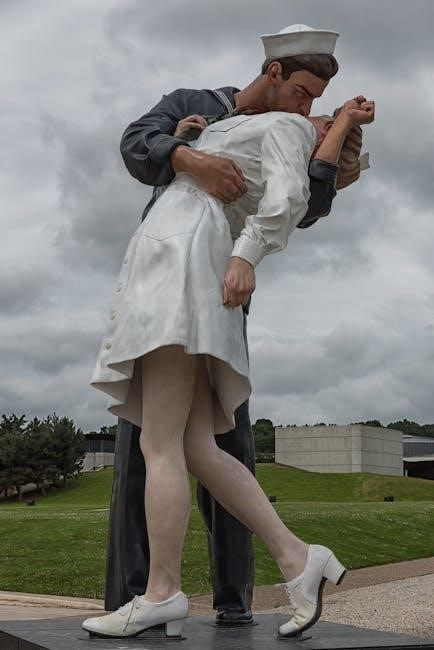
Erich Ludendorff‚ a key German commander‚ played a central role in strategic decisions‚ notably on the Eastern Front‚ but his aggressive tactics ultimately led to Germany’s defeat. Douglas Haig‚ Britain’s commander‚ faced criticism for his reliance on costly attrition tactics like those used at the Somme. Ferdinand Foch‚ as Supreme Allied Commander‚ coordinated efforts across the Western Front‚ leading to the Allied victory. Their leadership shaped the war’s outcome‚ with Foch emerging as a unifying force and Ludendorff’s strategies contributing to Germany’s collapse. Their decisions remain pivotal in historical analyses of World War I.
Cultural and Historical Figures: Wilfred Owen and the War Poets
Wilfred Owen‚ a British soldier-poet‚ is renowned for his vivid depictions of World War I’s horrors‚ such as in Dulce et Decorum Est. His works exposed the brutal realities of trench warfare‚ challenging romanticized notions of conflict. Other notable War Poets‚ like Siegfried Sassoon and Robert Graves‚ also documented their experiences‚ offering searing critiques of war’s futility. Their writings profoundly influenced public perception‚ humanizing soldiers and revealing the psychological toll of combat. Owen’s tragic death just before the Armistice added poignancy to his legacy‚ cementing his status as a voice for the lost generation.
Royal Figures: Tsar Nicholas II and King George V
Tsar Nicholas II of Russia and King George V of Britain were central figures during World War I. Nicholas II‚ the last Russian emperor‚ faced immense pressure as the war drained resources‚ leading to widespread discontent and his eventual abdication in 1917. His decision to take personal command of the army further tarnished his image. King George V‚ though less directly involved in military decisions‚ played a symbolic role‚ visiting troops and boosting morale. His reign saw the British monarchy adapt to the war’s challenges‚ maintaining public support during a time of crisis and transformation. Both rulers faced profound consequences from the conflict.